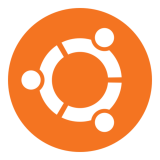Category: Linux
-

An Introduction to Ubuntu’s Personal Package Archives
Do you use Ubuntu? Then you probably know that there really only are a few ways in which you can install software on your computer. Most people use either the Ubuntu Software Center or Synaptic Package Manager. Of course, you can compile the software’s source code or install it with a .deb package, but both…
-
How to Detect Rootkits in Linux with rkhunter
As most are aware, there are very few viruses written for the Linux OS. There are, however, 242 known rootkits that can cause catastrophic damage to a Linux box. This post covers a rootkit detector called rkhunter. It is available from the repositories and is actively maintained at the time of posting. Don’t know what…
-
How to use Aliases in Linux to Shorten Long Commands
Tired of typing the same long commands each time you have to use them in Linux? Create aliases! An alias is an abbreviated command, a short word you choose that will do the work of a long command requiring switches or parameters. Creating Aliases in Linux First, install the vim text editor: [code lang=”shell”] sudo…
-

Using the Linux Command Line with Nautilus Terminal
One myth about Linux that just won’t die is that you absolutely need to understand and use the command line to get the most out of it. I know a number of Linux users who’ve never cracked open a terminal window, and they’re quite happy. That said, I find the command line to be an…
-
Add Amazing Visual Effects to Ubuntu with Compiz
Compiz is a compositing window manager, a program that beautifies the desktop with unique animations and special effects. It can make windows wobble when they are moved, and either explode into pieces or burst into flame and disappear when they are closed. Compiz uses your computer’s video card to manage the behavior of windows and…
-

Bring Evernote to Your Linux Desktop with Nevernote
When it comes to certain desktop applications, Linux is often the poor cousin of operating systems. Take, for example, Evernote. Evernote is an application that lets you take detailed notes, and more. It’s designed to help you, as its tagline says, remember everything. There are versions of the software for Windows and Mac OS but,…
-
Take Your To Do List to the Command Line
If you’re serious about your to do list and want to be sure that you can use it in the future, then you should think about embracing your inner geek by 1) going text only, and 2) doing everything at the command line. The best way to do that is with Todo.txt. Hold On ……
-
Clean up your Linux computer with Bleach Bit
No matter how careful you are, things like cached files, cookies, temporary files, packages, and log files build up over time. Bleach Bit helps remove this junk from your Linux PC.
-
Chrome OS: Even your mom will like it
Last week after work, I came home to find a package slip from UPS stuck to my door. This was a bit odd because I wasn’t expecting any deliveries. Always one to take advantage of a misdelivered box of goodies, I headed to the UPS shipping center to check things out. The serviceman came out…
-
How to Close Pidgin Chat Windows with the Escape Key
Pidgin (formerly known as Gaim) is a free, multi-protocol instant messaging application for Windows, Mac, and Linux. Pidgin is highly customizable and supports popular instant messaging networks like Google Talk, MSN/Windows Live Messenger, AIM, Yahoo! Chat, and can connect to services like Facebook Chat through plugins (or directly through the XMPP messaging protocol). In recent…
